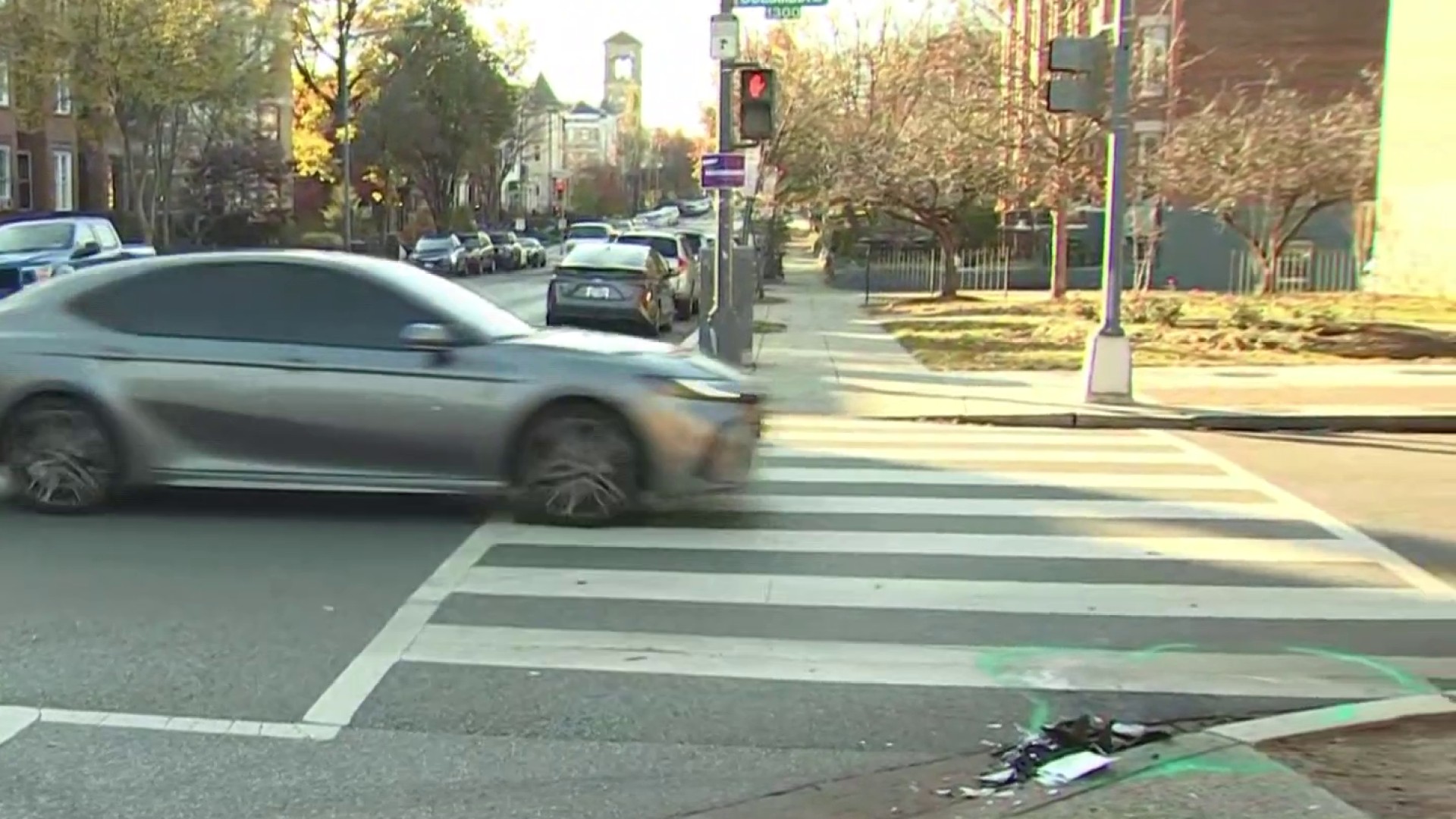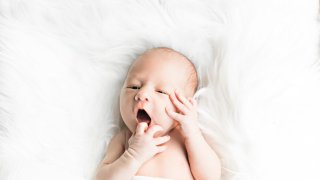
For most parents, choosing a name for a child is a difficult process. Do you pick a classic or popular name and run the risk of being labeled "basic"? Or is it better to choose a unique name but potentially set up your child for schoolyard teasing or frequently having to spell their name for others?
According to data released by the Social Security Administration (SSA) in 2018, parents in D.C., Maryland and Virginia are increasingly choosing the latter and going with more original names like Phoenix, Saige or Zayden.
We combed through the data and also found names that pop up in music, on TV and in politics can have a big impact on parents' choices. For example, there were 21 baby boys named Darrin in 1964, but the following year, 144 Darrins were born. This 643% surge in popularity corresponds with the debut of the hit TV show "Bewitched," in which Darrin was a lead character.
How Shifting Demographics Affect Baby Names
In the D.C. area, Mary, James and William dominated as the most popular baby names for the first half of the century. At the peak in 1910, 18% of baby boys were named James or William, and 8% of baby girls were named Mary. Although the percentage of babies given these names declined steadily, they remained some of the most popular names in the region until around 1960.
The Most Popular Baby Boy Names in DC, Maryland and Virginia
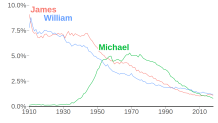
Credit: Anisa Holmes/NBCWashington
The Most Popular Baby Girl Names in DC, Maryland and Virginia
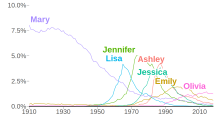
Credit: Anisa Holmes/NBCWashington
By the end of the century, even the most popular names were accounting for a lower percentage of babies, indicating that naming conventions were growing less monolithic. For example, Olivia was the most popular girls' name for the 2010s, but when it reached its peak (in 2014), still only 1.4% of baby girls received the moniker. And Liam, the most popular boys' name in 2018, only accounted for 1.3% of baby boys.
That means parents are branching out more. In 1910, there were a total of 320 recorded boys' names and 518 girls' names. By 2018, the number of boys' and girls' names in the database had skyrocketed to 2,336 and 2,707, respectively. The database does not include any name with fewer than 5 occurrences, so the list is likely far higher.
How Demographics Play a Role in Baby Name Trends
Midway through the 20th century, the District's demographics began to shift dramatically, starting with the growth of the African-American community. From 1940 to 1970, the percentage of the black population in Washington, D.C. grew from 28.2% to 71%.
Local
Washington, D.C., Maryland and Virginia local news, events and information
"The Washington area hasn't been a big hub in immigration compared to L.A. and New York until about the '80s. Since then, a lot of immigration has been from countries in Central America, Asia and Africa,” said Peter A. Tatian, research director for Greater DC at the Urban Institute.
"About one out of every five immigrants in D.C. are from Central America, of which the biggest share has been from El Salvador," he said.
According to the U.S. Census, D.C. is also the metropolitan area with the second largest African-born population (161,000). Maryland (15%) and Virginia (9%) also have the second and third largest African-born populations of any state. Many African immigrants in the region hail from Ethiopia and Nigeria.
According to the Urban Institute, immigrants from Asia, mostly China, India and Korea, have also grown by more than 22% from 2000 to 2016.
As the ethnic makeups of D.C., Maryland and Virginia change, the types of names given to newborns broadens.
For example, the use of José, a common first name for Latino boys, has increased steadily from the 1950s on. By 2004, José reached a peak of 259 baby boys. The popularity of Amina, a girls' name of Arabic origin common to African and Muslim communities, grew from the 1990s to the 2010s, reaching a peak of 92 baby girls in 2017.
The Rise of José and Amina in DC, Maryland & Virginia
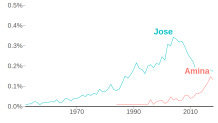
Credit: Anisa Holmes/NBCWashington
The Biggest Trends in Baby Names in the DC Area
From Woodrow to Iesha, the names that suddenly surged in popularity might be linked to politicians, popular movies, musicians and other cultural icons that captured the public's attention. Each of the names listed below had a 400% to 4,000% spike in their popularity over just one year within the combined region of D.C., Maryland and Virginia.
Trendy Baby Names in DC, Maryland and Virginia
Source: Social Security Administration
Credit: Anisa Holmes/NBCWashington
The Rise of Gender-Neutral Names
So which trends will influence future names? When it comes to demographics, Tatian says, "There’s a lot of uncertainty about what immigration is going to look like in the future. But certainly those patterns will impact both national trends and local trends."
Besides the role of immigration, changing attitudes toward gender expression could play a greater role in future baby names.
"They often start as surnames (Riley) or as words from nature (River). However, while more and more of the same names are being used for both males and females, we’re also seeing that many neutral names eventually become associated with one gender or the other," Sherri Suzanne, founder of My Name for Life, a baby naming consultancy in New York, wrote in an email to NBC Washington.
“Whether a so-called unisex name is 'more for boys' or 'more for girls' is a hot topic among parents-to-be. The significance is that parents are still sensitive to whether a name reads masculine or feminine," she wrote.
Suzanne also points to the changing sources of pop culture. “It’s not just TV, movies and music anymore—You Tube family vloggers are influencing names,” she said.

